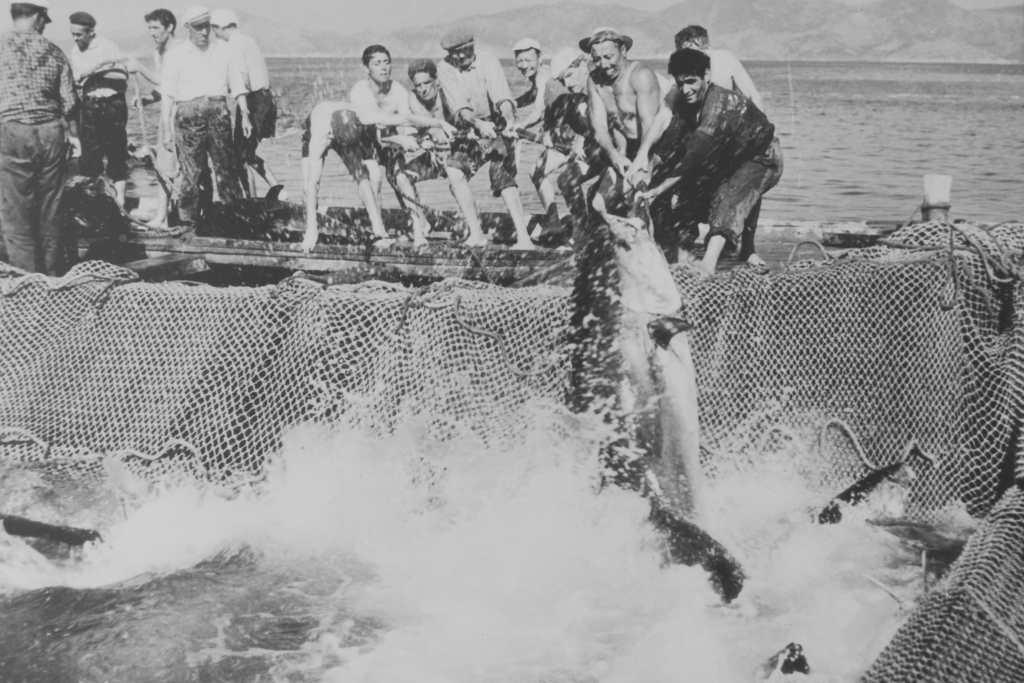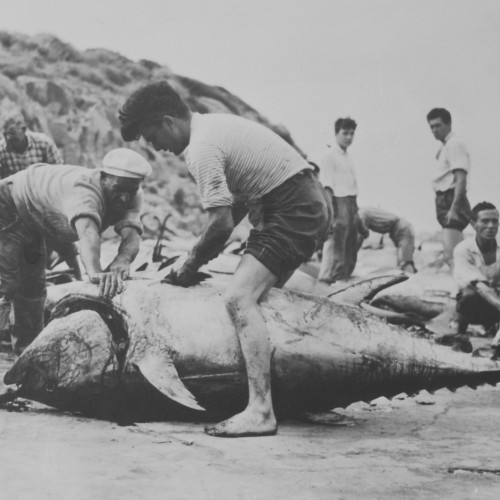
As long ago as the 1st century BC, Strabo documented the presence of tuna in the Tyrrhenian and the seas near Elba. It was he who cited the thynnoskopeon, an observation point in Baratti, along the cliffs not far from the Etruscan city of Populonia, across the modern-day Piombino Channel, a post that must have been used to monitor the passing of these large fish in order to catch them using an ancient tuna trap. Fishing may have been introduced on Elba in the second half of the 16th century, during the rule of Francesco I de' Medici, Grand Duke of Toscana, but it was his successor, Ferdinando I, who developed tuna fishing on the island, summoning fishing experts from Trapani, in Sicily, in order to import their techniques.
Having observed the regular migration of schools of tuna, it was a matter of setting up mobile structures at sea and fixed ones on land to catch these large Scombridae. After initial attempts in Capo Bianco, successful fishing continued in Portoferraio bay for nearly two centuries, using onshore structures set up near the 'Medici town'. In 1655, fishing also began further west, in the large bay of Procchio, and a second tuna trap, equipped with a marfaraggio, the permanent onshore component required for fishing, was therefore established on the small Bagno di Marciana beach. Here, facilities were created consisting of a factory for tuna processing and preservation, warehouses for draining the catch and storing the trap equipment, and another building used as accommodation for the fishing master, known as the Rais, and other fishermen.
Towards the end of the 18th century, it was decided to move fishing from Portoferraio bay to the Enfola promontory, on the northern side of Procchio bay, with completion in 1810 of the new marfaraggio, now the National Park headquarters. Tuna fishing using these traps, facing one another across the broad inlet at the foot of the northern slope of Mount Capanne, continued until the mid 20th century, albeit with varying fortunes. 1954 marked the final, though extremely fruitful, chapter of tuna fishing at Bagno di Marciana. On Enfola, the tradition came to a halt in 1958 when a heavy coastal storm swept away the net, damaging it.



